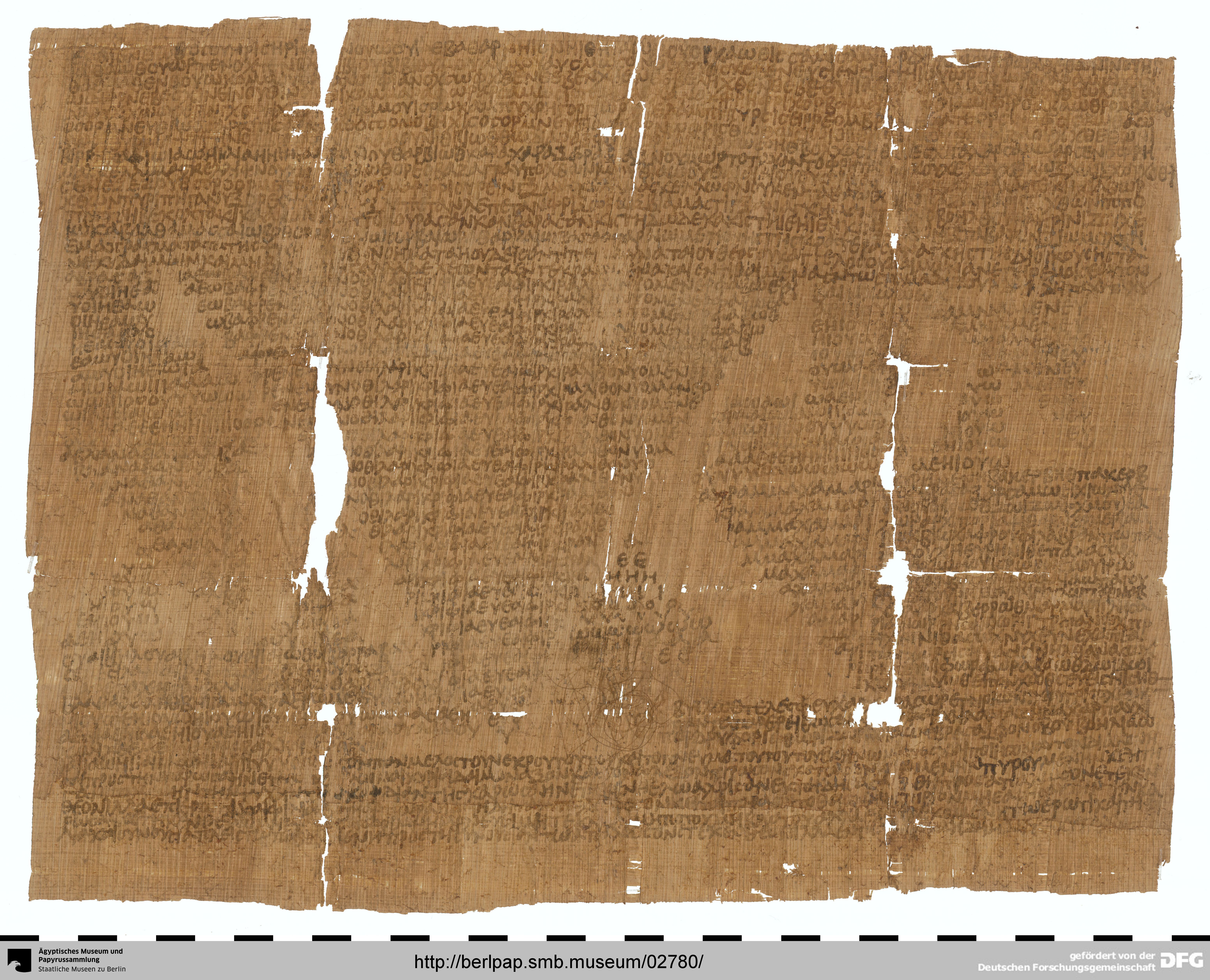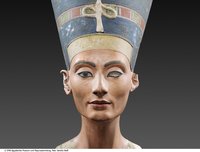Amulett mit Liebeszauber. Anrufung verschiedener Gottheiten und des Totendämons (nekydaimon), voces magicae (Zauberwörter) in Schwindschema und Rhombusform, dann Liebeszauber (ἀγωγή) für Karosa, Tochter der Thelo, von Apalos, Sohn der Theonilla. Das Amulett wurde dreimal vertikal und viermal horizontal gefaltet, enthielt zusätzlich eine braunrote Haarsträhne und sollte in den Mund einer Mumie gesteckt werden.
Diese Seite ist sichtbar in der Ausstellung im Neuen Museum
Nach BerlPap: http://berlpap.smb.museum/02780/
Angaben zur Herkunft:
Byzantinische (Koptische) Zeit
Hermupolis Magna (Ägypten / Mittelägypten)
en

